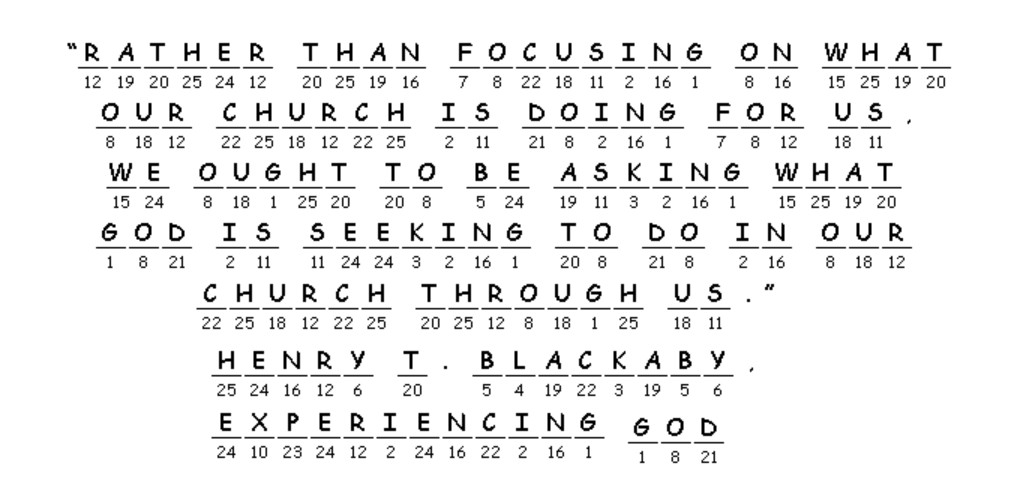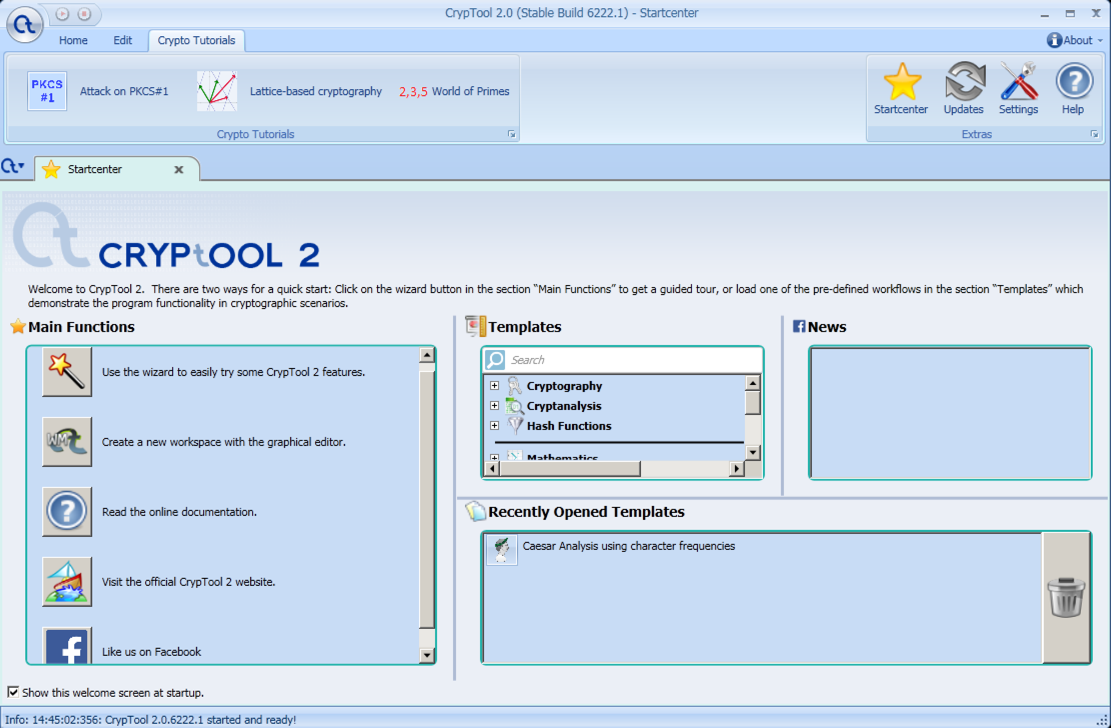

It uses softmax on the difference of the scores of the current text and new text to determine whether it wants to keep the new mapping. The algorithm is run for a pre-defined number of iterations, where in each iteration it swaps random letters in the mapping and re-scores the text. I use a modified version of simulated annealing for the optimization algorithm. You can think of score as error, so lower is better. This is done when "fitting" the solver to data (see Solver.fit()).

For example, to compute the probability of a character bigram, I divide the frequency of that bigram by the total number of character bigrams. Token probabilities are computed by token "type" (word/character and n-gram count combination). To score decryptions, I use the negative log likelihood of the token probabilities. Token( ngrams =( ''), kind = 'char', n = 3) Scoring Token( ngrams =( 'hello',), kind = 'word', n = 1) Tokenizer( char_ngram_range =( 2, 3), word_ngram_range =( 1, 1)) > from cryptogram_solver import solver > tk = solver.
CRYPTOGRAM SOULVER CODE
The code example below shows how the tokenizer creates character bigrams and trigrams as well as word unigrams. I use a tokenizer that can generate both character n-grams and word n-grams. (That is, the letter a could map to one of 26 letters, b could map to 25, and so on.) And there isn't a surefire way to tell if you've found the correct mapping. You might also guess that if X appears a lot in the text, it might be a common letter like e.īut having a computer solve this is tricky. E.g., if you see ZXCVB'N, you might guess that N is t or s. "Imagination was given to man to compensate him for what he is not, and a sense of humor was provided to console him for what he is." -Oscar Wildeīy hand, you'd use heuristics to solve cryptograms iteratively. Once you make all the correct substitutions, you get the following text. The goal is to realize that i's were replaced with S's, m's with N's, and so on for all the letters of the alphabet. "SNDVSODTSBO LDF VSHYO TB NDO TB EBNRYOFDTY KSN PBX LKDT KY SF OBT, DOC D FYOFY BP KZNBX LDF RXBHSCYC TB EBOFBJY KSN PBX LKDT KY SF." -BFEDX LSJCY Though once used in more serious applications, they are now mainly printed for entertainment in newspapers and magazines.įor example, let's say you're given the puzzle below. To solve the puzzle, one must recover the original lettering. Frequently used are substitution ciphers where each letter is replaced by a different letter or number. Generally the cipher used to encrypt the text is simple enough that the cryptogram can be solved by hand. Python solver.py -l -i 5000 -lamb_start 1 -vĪ cryptogram is a type of puzzle that consists of a short piece of encrypted text. To fit a solver on 1000 documents ( -n 1000) from a custom corpus ( -docs_path ) with a tokenizer that uses character bigrams and trigrams ( -c 2 3) and word unigrams ( -w 1 1) with a max vocab size of 5000 ( -b 5000), save it to file ( -s) (right now just to models/cached/), and solve the encrypted text (represented here as ): Usually you only need to specify the encrypted text, saving ( -s), loading ( -l) and the number of iterations ( -i, which you can set to be lower for longer decryptions). The default settings tend to work well most of the time. v, -verbose verbose output for showing solve process s, -save_solver save fitted solver for use later lamb_end LAMB_END Poisson lambda for number of additional letter swaps Poisson lambda for number of additional letter swaps Number added to all token frequencies for smoothing

p PSEUDO_COUNT, -pseudo_count PSEUDO_COUNT Number of documents used to estimate token frequencies Path to corpus (a text file) for fitting solver Path to word n-gram frequencies (a CSV file) for Range of word n-grams to use in tokenization w WORD_NGRAM_RANGE WORD_NGRAM_RANGE, -word_ngram_range WORD_NGRAM_RANGE WORD_NGRAM_RANGE

Range of character n-grams to use in tokenization c CHAR_NGRAM_RANGE CHAR_NGRAM_RANGE, -char_ngram_range CHAR_NGRAM_RANGE CHAR_NGRAM_RANGE Number of iterations during simulated annealing h, -help show this help message and exit


 0 kommentar(er)
0 kommentar(er)
